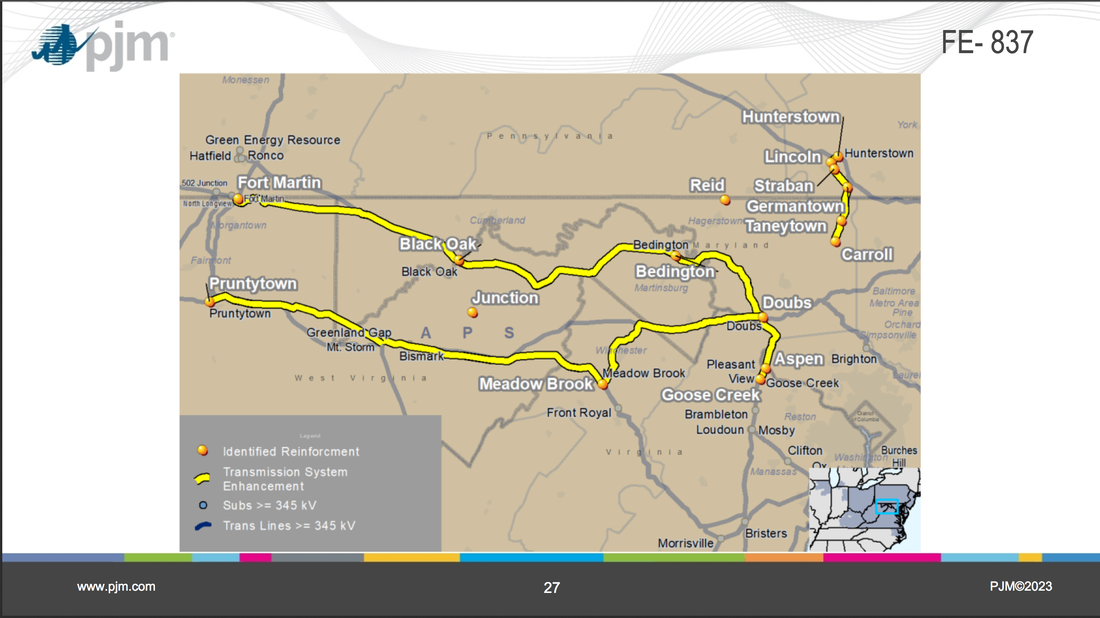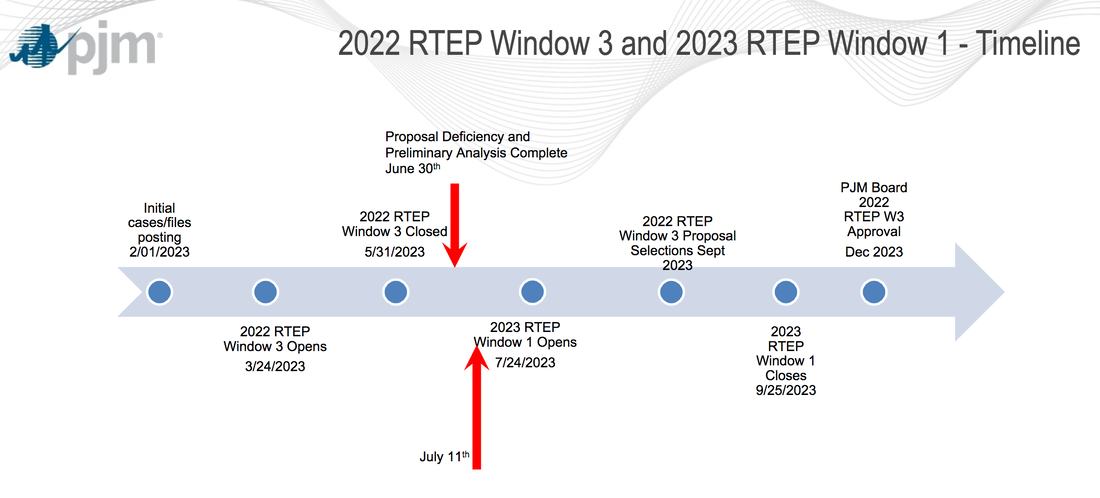Or can it?
The Infrastructure Investment and Jobs Act and the Inflation Reduction Act have created a new transmission feeding frenzy from coast to coast. Now that the government is giving away your tax dollars to provide incentive to build new transmission "for renewables," utilities and transmission developers are falling all over themselves to belly up to the buffet. There is no actual plan for what transmission needs to be built, any transmission will do. It's about quantity, not quality. They just can't propose transmission fast enough. And apparently some utilities are simply recycling old transmission projects from the last decade that were never built.
Remember the Mid-Atlantic Power Pathway, or MAPP, project? Proposed around 2007, this hotly opposed transmission project across Maryland's eastern shore was finally abandoned several years later, citing lack of need. The utilities behind this horrible idea were fully reimbursed for their sunk costs by ratepayers who would have "benefited" from the project. If my memory serves, it was something like $80M that we paid for a transmission project that was never constructed.
The MAPP project is back, one of dozens of new transmission proposals currently being evaluated by grid planner PJM. They even recycled the name... once again calling it MAPP.
Project title: Mid-Atlantic Power Pathway (MAPP)
Project description: Exelon is proposing a 230 mile, 500 kV AC / 400 kV DC high-voltage transmission line originating in Northern Virginia, crossing Maryland, traveling up the Delmarva Peninsula and terminating in southern New Jersey.
Transmission fatigue is a thing. Communities who have fought a transmission line are instantly opposed to another proposed for the same area, and they know what to do because they've ridden in this rodeo before. A recent transmission proposal through New Hampshire is giving communities that fought the scrapped Northern Pass project PTSD.
When four representatives of National Grid came before Concord City Council on Monday to start the long process of expanding a power line through the state bringing electricity from HydroQuebec, they soon encountered a ghost.
“Our community still suffers from PTSD with regard to Northern Pass,” Councilor Jennifer Kretovic told them. “When you mention the words HydroQuebec, that will automatically raise concern.”
The four representatives nodded glumly.
It seems that every contested and vanquished transmission project from the past 15-20 years has been resurrected.
Remember PATH, the Potomac-Appalachian Transmission Highline? It's back. But instead of just the revised, re-routed project that PATH finally settled on, former PATH partner FirstEnergy has proposed BOTH the original PATH route through Morgan, Berkeley and Jefferson Counties AND the revised PATH route through Frederick County, VA, southern Jefferson County, WV, Loudoun County, VA and Frederick County Maryland. This is FirstEnergy's recent proposal for PJM's competitive transmission window. On a map, it looks like this:
Component title: Fort Martin - Doubs 500 kV #1 Line
Project description: Construct ~158 miles of new 500 kV line from Fort Martin Substation to Doubs Substation.Terminate the new transmission line and revise relay settings at Doubs and Fort Martin substations.Install fiber OPGW along the new line route. The construction of this new line will require the acquisition of 158 miles of new right-of-way, forestry clearing, permitting, and access road construction. Re-terminate the Bismark 500 kV Line at Doubs Substation. Aerial LiDAR will be required. This new transmission line will require Proposal Components 1 (Doubs Substation - Install500 kV Breaker), 2 (Doubs Substation - Expand 500 kV), and 4 (Fort Martin Substation - Install 500kV Breaker) to be completed.
This new 500 kV line will be constructed in West Virginia, Virginia, and Maryland. Full Applications will be required in each state. - It is assumed that the new 500 kV line will parallel existing ROW for approximately (85.6) miles and require (74.4) miles of new ROW not adjacent to existing ROW. It is assumed that no existing lines will be overbuilt with double circuit structures, but existing line rebuilds will be considered where applicable. - Approximately (695) parcels will be affected by the line route. Assumed 5% condemnation (35 parcels).
The right-of-way width is assumed to be 200 ft. This width is based on the widest ROW needed for 500 kV and does not account for structure configuration or span lengths. Widths needed may vary upon final design.
The new Fort Martin-Doubs #1 500 kV Line will be constructed on double circuit 500 kV tubular steel monopole and two-Pole structures. The second 500 kV circuit is to be left vacant and installed at a future date. - The average span length is 1200 ft. - It is assumed that the new double circuit monopole structures will have an average height of 180 ft. Final structure heights will need to be determined during project development. FAA filing and application may be required. - The new structures will utilize custom 500 kV V-string and double I-string suspension and dead-end insulator assemblies.
This new 500 kV line provides a direct connection from the west side of the system to the east side. - This new line provides the ability to install a second Fort Martin - Doubs 500 kV Line on the same structures, without additional right-of-way acquisition. - This new line route will provide the opportunity to loop the Fort Martin - Doubs 500 kV Line into Bedington and/or Black Oak substations in the future, if necessary for reliability or resiliency. - Greenfield construction is assumed due to outage constraints, but existing rights-of-way and corridors to rebuild lower voltage lines will be considered where applicable.
Component title: Meadow Brook - Doubs 500 kV Line
Project description: Construct 55.3 miles of new 500 kV line from Meadow Brook Substation to Doubs Substation.Terminate the new transmission line and revise relay settings at Doubs and Meadow Brook substations. Install fiber along the new line route. The construction of this new line will require the acquisition of 55.3 miles of new right-of-way, forestry clearing, permitting, and access road construction. Re-terminate the Meadow Brook - Loudon & Meadow Brook - Front Royal 500 kV lines at Meadow Brook Substation. Aerial LiDAR will be required. This new transmission line wil lrequire Proposal Components 1 (Doubs Substation - Install 500 kV Breaker), Component 2 (Doubs Substation - Expand 500 kV), and Component 3 (Meadow Brook Substation - Expand 500 kV) to be completed.
This new 500 kV line will be constructed in Virginia, West Virginia, and Maryland. Full Applications will be required in each state. - It is assumed that the new line will parallel existing ROW for approximately (22.8) miles and require (32.5) miles of new ROW not adjacent to existing ROW. It is assumed that no existing lines will be overbuilt with double circuit structures, but existing line rebuilds will be considered where applicable. - Approximately (146) parcels will be affected by thel ine route. Assumed 5% condemnation (7 parcels).
The right-of-way width is assumed to be 200 ft. This width is based on the widest ROW needed for 500 kV and does not account for structure configuration or span lengths. Widths needed can vary upon final design.
This new line will be constructed on single circuit 500 kV tubular steel monopole structures with an average span length of 1200 ft. - The new structures will utilize custom 500 kV V-string and double I-string suspension and dead-end insulator assemblies. - New single circuit structures will have an average height of 150 ft.
This new 500 kV Line will provide an additional and much shorter electrical path between Meadow Brook and Doubs linking the Black Oak-Bedington corridor with the 'AP South' corridor. - Greenfield construction is assumed due to outage constraints, but existing rights-of-way and corridors to rebuild lower voltage lines will be considered where applicable.
It's not an "either/or" proposition. FirstEnergy wants to build BOTH old PATH ideas this time.
Here we go again!
Is this new transmission required to expand renewable power? Look at the map, it's self-explanatory. PJM is soliciting proposals to move more coal-fired electric generation from plants at Ft. Martin and Pruntytown into the Washington, D.C. suburbs. New generation is needed there because these areas have closed a whole bunch of the "dirty" coal and gas fired generation that used to keep their lights on. Instead of replacing what they closed with local renewables, they're burying their heads in the sand and pretending they don't need any new generation. However, they're also building new data centers that use an enormous amount of power and leaving it up to grid planner PJM to find a way to keep the lights on and the data centers humming. The new PATH is one proposal for PJM to do just that. Hardly "clean and green" is it? It's a step back 20 years in time, when PATH was proposed to move 5,000 MW of coal-fired electricity from southern West Virginia to the D.C. metro area.
So, what happens next? PJM says it will select projects from its huge proposal list in September. Once selected, it proposes to have the favored projects approved by its Board in December of this year. See timeline here (these projects are in 2022 RTEP Window 3):
Keep your eyes on this one. PATH did not happen the first time due to widespread opposition. We're still here and we remember.


 RSS Feed
RSS Feed